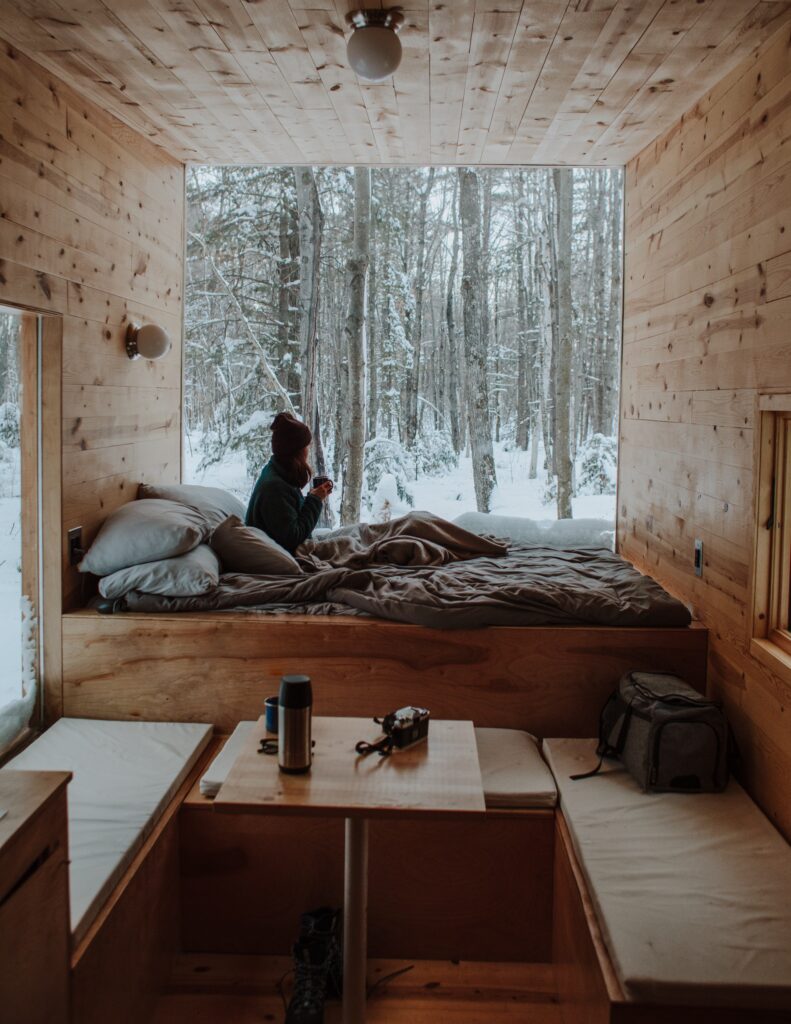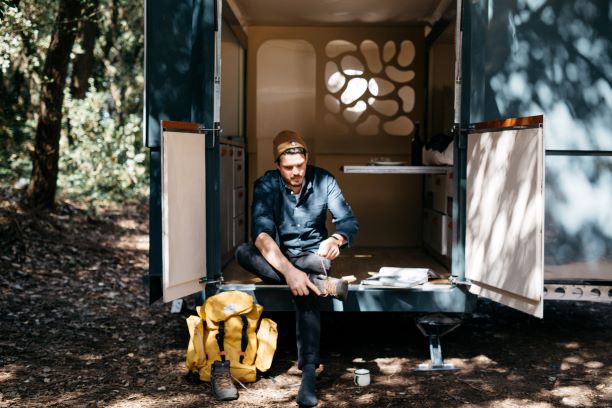
Your own what? Yep, the Tiny House Movement is perhaps the cutest thing you’ve never heard of. Promoting the double-pronged interests of architectural intrigue and the joys of minimalising, some urban dwellers have embraced so-called ‘tiny houses’ as a way of decluttering, living more slowly and simply, and saving a fair bit of money, too.
Sign us up! We could all do with a good personal declutter from time to time, and this takes things to the next level. To really enhance that sense of freedom and shedding of life’s baggage, we’re particularly excited about the wheeled version, allowing you to take to the open road and explore, in compact, cosy form. The best part? You can actually build one yourself! With that in mind, here 7 tips for building your own tiny wheeled house.
ENSURE THE TINY HOUSE MOVEMENT IS RIGHT FOR YOU
While we could extol all the benefits of a tiny house (less clutter, potential lower carbon footprint, more savings), before you decide to build one, make sure this type of living is right for you.
While the tiny house movement can be a way to avoid mortgage debt and landlord enrichment, bear in mind that tiny houses usually depreciate in value and are hard to sell on. Also, as they are not attached to any land; as such, many owners report a sense of groundlessness, and tiny houses can be constant reminder of a fragile housing state. Moreover, tiny houses shouldn’t be the governments answer to the housing crisis. Instead, they should be a lifestyle choice, so make sure it’s the right choice for you.

USE PREFAB HOUSES FOR EASE OF ASSEMBLY AND MAINTENANCE
When you start building your tiny house, it is vital that you use the right materials. If you are a newbie at carpentry, it is usually a good idea to purchase a prefabricated house, where are usually made of a used shipping container that is recycled into small size homes. Some DIY tiny home kits are even available to buy on Amazon.
Container house manufacturers mass-produce prefab houses for a very affordable price, with houses like this simple to assemble and maintain. Generally speaking, if you’re building a tiny house for the first time, it’s advisable to just buy a prefabricated one that saves you both time and effort in the long run.
INSULATE YOUR TINY HOUSE PROPERLY
Once you’re finished setting up your prefab tiny house it is important that you insulate it properly. You’re going to be on the move, and the further afield you find yourself, the more temperatures and conditions may fluctuate. If your tiny house isn’t properly insulated, your travel experience might be uncomfortable.
When it comes to tiny houses, it is best to use spray foam insulation. Spray foam insulation provides greater resistance from mould or mildew because it helps prevent moisture from getting into the walls. It also has excellent cooling and heating benefits. This option also adds more density and sturdiness to your walls.

INSTALL PLUMBING
You’re going to need a working bathroom installed in your wheeled tiny house. Due to the portable nature and size of a tiny house, it can be a bit difficult to install a toilet in the bathroom. But it is doable, and also, essential.
Just make sure that you install a removable septic tank so you can easily dispose of your waste. You should also install an effective water tank system. Remember that there may be days where you will have to travel without a steady water source so your water tank system is key to your comfort and survival on the road.
CHOOSE A SUSTAINABLE ELECTRICAL SYSTEM
Electricity is a necessity if you own a tiny house and want to keep the lights on. Though we’d love to go seriously old school and do things by candlelight, it’s simply not safe or practical to do so full time. Instead, you should make sure your electrical system is installed properly; have a professional install your wiring and outlets to avoid electrical accidents.
When it comes to selecting a power source, it all really depends on your budget. If you are aiming for a more simplistic design, then a portable battery is a good option. That said, you’ll need to replace it on a regular basis, which can get a bit tedious.
Should you wish to have a more sustainable electrical source, you could invest in a small generator, or better yet solar panels. That way you can constantly replenish your energy source.
CHOOSE A SUITABLE WHEELED PLATFORM
Aside from your tiny house, it is also important that you pay attention to your wheeled platform. This platform is where you will place the tiny house and as such, it needs to be sturdy. Remember that this wheeled platform will support at least half a ton of wood and steel for miles on end. It is also meant to handle the weight without crumbling and prevent the wheels from breaking down.
The platform should also have suitable breaks and a reinforced frame.
MAKE SURE YOUR CAR IS CAPABLE OF TOWING YOUR TINY HOUSE
Aside from your wheeled platform, it is also important that your car is capable of towing your tiny house’s weight. What, you thought your tiny house was going to be rolling down a hill of its volition? Nope, it’s going to need some assistance to keep in motion. Your car should be equipped with a bumper pull that can handle the vast weight and the constant strain of being pulled. As an alternative, consider mini digger hire, which will have ample energy and pulling power for your tiny house.
THE BOTTOM LINE
Building your very own wheeled tiny house may be a very work-intensive project, but it is all worth it in the end. If you hire someone else to build your tiny house for you or buy a prefab house, ensure you do your research. Unfortunately, construction within the tiny house movement is unregulated, leaving owners at risk to bad work and companies going out of business.
Warnings aside, channel that free-wheelin’ energy of the open road, and the freedom which a minimalist living space brings, and get ready for an adventure!





